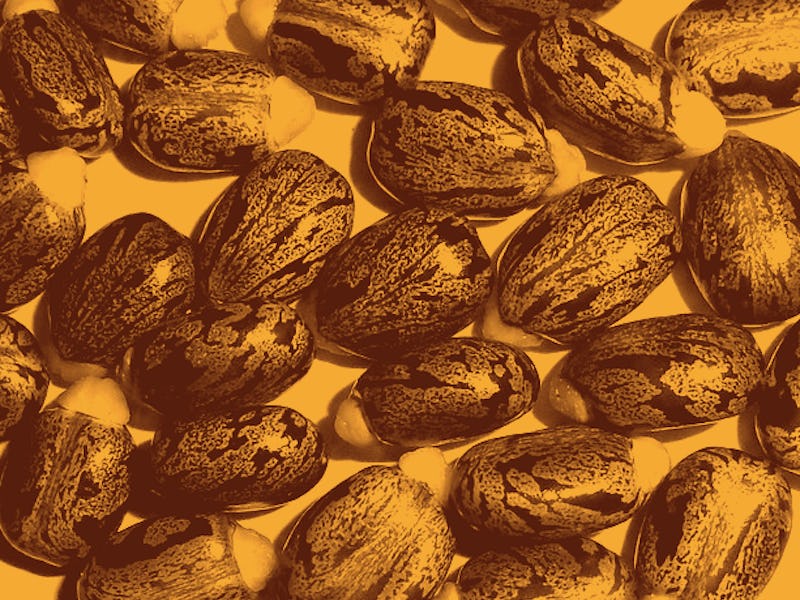Ricin Suspected in White House Plot Is a Fatal Poison From an Innocent Seed
It's alarmingly easy to make.

Ricinus communis, a perennial flowering plant native to East Africa and India, appears innocuous at first glance. The wide-leafed plant’s two-meter stalk bears a large seed, deceptively known as a castor bean. Historically, oil made from this seed has been used for the benefit of society — and its pulp has been used to inflict terror in the form of a poison called ricin. Now, this poison is back in the spotlight because of an attempt made on the lives of President Donald Trump and top officials.
Federal authorities announced this week that officials had intercepted multiple packages suspected of containing ricin. The Secret Service confirmed the “receipt of a suspicious envelope addressed to the President” on Monday, but emphasized that it did not enter the White House. On Tuesday night, the FBI announced that the Pentagon Force Protection Agency and the FBI took possession of two envelopes that were screened at the Pentagon mail facility, each suspected of containing ricin. These envelopes were addressed to Secretary of Defense James Mattis and to the chief of naval operations, Admiral John Richardson.
When a person is exposed to ricin — either as a powder, mist, pellet, or dissolvent — it gets inside their cells and prevents them from making crucial proteins. In turn, these cells can die, leading to nausea, vomiting, and internal bleeding. Eventually, the liver, spleen, and kidneys fail, and the individual dies.
Leaves and flowers of the castor oil plant.
However, castor beans, which are oblong and mottled with dark brown spots, are only toxic if their outer shell is broken or chewed. Use of the castor bean dates to at least 4,000 BCE, though it wasn’t necessarily used as a poison then. Castor beans have been found in ancient Egyptian tombs, and archaeologists suspect that oil made from them was used in facial oils and in wick lamps for lighting. Today, castor oil is used as a food preservative, a laxative, and a moisturizer.
When the castor beans are processed to make castor oil, the leftover “waste mash” contains ricin. Chewing can release the ricin as well, though it’s thought that an adult would have to eat about 20 beans to actually cause harm. This August, scientists at the Brazilian Agricultural Research Corporation announced they created a new variety of castor bean that is free of ricin, with the hope that the toxin-free variety could be used as animal feed.
The FBI states that the envelopes are currently in its possession and are undergoing more testing to confirm the contaminants. CNN reports that the substances in question are a “very crude castor bean concoction,” and they’re avoiding calling it ricin until tests can confirm the substance. But seeing as castor beans are at the root of the alleged poison, there’s more than enough reason to be suspicious.
Interested in White House news? Here’s President Trump talking about his “very large brain”: